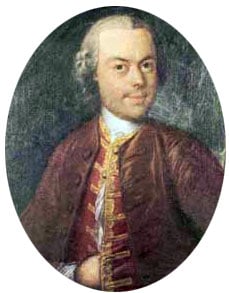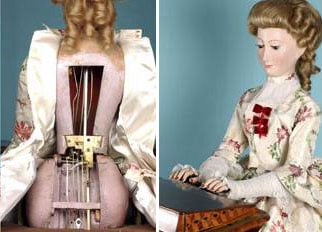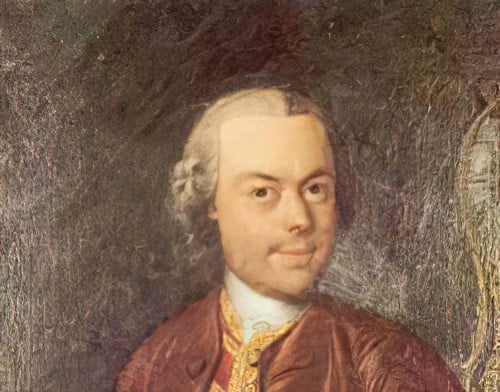
Who was Pierre Jaquet-Droz
Pierre Jaquet-Droz was a Swiss born watchmaker and mechanical genius. His watches and mechanical inventions combined artistically beautiful designs and intricately detailed mechanisms to create stunning masterpieces. In addition to self-winding watches and mechanical birds, Jaquet-Droz created three androids. These devices were made to look like children that each had a skill. One could write, one could draw pictures, and the other could play the harmonium. He made his devices with the help of his sons Henri-Louis Jaquet-Droz and Jean-Frédéric Leschot.
Quick Facts
- Full Name
- Pierre Jaquet-Droz
- Birth
- July 28, 1721
- Death
- November 28, 1790
- Net Worth
- Unknown
- Children
- Julie, Henri-Louis Jaquet-Droz, and Jean-Frédéric Leschot.
- Nationality
- Swiss
- Place of Birth
- La Chaux-de-Fonds, Switzerland
- Fields of Expertise
- [“Horology”,”Micro Mechanics”,”Automata”]
- Institutions
- University of Basel, University of Neuchatel
- Contributions
- Androids, Automata
Early Life
Pierre Jaquet-Droz was born on a farm in La Chaux-de-Fonds, Switzerland in 1721. He studied philosophy at the University of Basel and then moved on to the theology department at the University of Neuchatel 20km away. During this time he was introduced to watchmaking and miniature mechanics by some of his relatives. This type of craft captured his attention and it soon became his main focus. A master watchmaker, named Josue Robert, and his two sons trained Pierre Jaquet-Droz in the art of horology for nearly a decade.
Career
Pierre Jaquet-Droz’s career grew steadily from watchmaker’s apprentice to world-wide notoriety as an artist, micro mechanic, and inventor.
First Shop
Pierre Jaquet-Droz set up his first shop in 1738 where he would build long-case clocks in his own style. As he progressed, he began incorporating music and decorative movements to his pieces. He built up his reputation and skills for the next 12 years. Pierre was then married to the daughter of the local clock case supplier, Marianne Sandoz. They had a daughter, Julie, a few years later, and then Henri-Louis the following year. Sadly, both Julie and Marianne died in 1755.
Spain
After the deaths of his wife and daughter, he shifted his focus to his work and his son. The popularity of his work introduced him to many influential people. He eventually met George Keith who was the governor of Neuchatel and ambassador to Spain. George encouraged Pierre to visit Spain and present his work to the Spanish royal court. Pierre Jaquet-Droz travelled to Spain in 1755. He brought 6 clocks, an assistant, and his father-in-law Abraham-Louis Sandoz. The group had to wait several months until being received by the king, but it turned out to be a very worthwhile visit. Everyone was so impressed with his work that not only did the king buy all six of his clocks for a large amount of silver, but the other ambassadors present placed orders for their heads of state as well. This trip to Spain gave Pierre the freedom to grow his business and fund any projects that he wanted to develop over the next several years. This freedom would eventually lead to the development of his androids.
Androids and Touring
From 1767 to 1774, Pierre, his son Henri, and his adopted son/apprentice Jean-Frédéric Leschot developed three humanoid automatons. They would write, draw, and play the harmonium respectively. The draftsman and the musician are each composed of roughly 2500 pieces. The writer, needing to be much more dexterous, has over 6,000 pieces. These engineering marvels would be taken on tour with the family and astound audiences throughout Europe.

More Shops
Now that his work was so famous, Pierre decided to expand to more than just the single shop in La Chaux-de-Fonds. In 1774, Pierre opened a London branch of his business that was managed by his sons. The London branch helped to spread Jaquet-Droz pieces all over the world. Their caged birds became quite popular with the imperial court of Beijing. The London shop had been established and was so successful for a decade that Henri-Louis opened a third shop in Geneva in 1784.
Final Years
The three shops were running quite well for the first couple of years, but due to a string of bankruptcies and poor business associates the company was forced to shut down in 1788. Pierre died two years later. Henri followed the year after. Jean-Frédéric continued on his own for the next twenty years, but in a significantly reduced capacity. He did not develop any new designs, and simply produced variations of their older works. Jaquet-Droz Leschot watches simply evaporated around 1810.
What is Pierre Jaquet-Droz Known For?
Pierre Jaquet-Droz is known for his watches, songbirds, and androids. He built automated scenes and animals, and even people. Using intricate, delicate, and sophisticated micro machinery Pierre Jaquet-Droz was able to add movement and sound to art. Expanding on the already complex workings of a Swiss watch, Pierre could have tiny mechanical birds sing and fly. They could trill as they moved their wings and heads. He would then move on to Jewelry boxes and snuff cases that had moving scenes and birdsongs. Large ornate bird cages with an automata bird was the next logical step. After mastering this unique type of mechanical skill, Pierre went on to create three stunningly lifelike, for the time, androids that could draw, write, and play the harmonium.

Watches
His watches were revolutionary for their time. His incorporation of sound and shaped movement. He developed the automatic winding pocket watch using a tiny inertia block. The oscillations of the inertia block wind the spring of the watch with a click system as the person walks.
Songbirds
He created shaped movement scenes filled with butterflies, animals, and birds with real feathers. Each bird could actually sing their own unique song by using sliding piston whistles.
Three Androids
He created three androids. The writer, the musician, and the draftsman. The musician was made to look like a young girl playing a harmonium. The other two were young boys sitting at desks. The draftsman could draw surprisingly detailed drawings. The writer was the most sophisticated of the three. It could write any message up to 40 spaces in length. It would ink its quill and gracefully scribe out the intended message.

Pierre Jaquet-Droz: Net Worth, Marriage, Children, Tragedy
Net Worth
Pierre Jaquet-Droz was a wealthy man for much of his life, although he did start to have financial problems later in his life due to bankruptcies abroad. Pierre died in 1790 and his son Henri-Louis died the following year. Jean-Frédéric did not create any new designs after losing his two partners. He would still produce variations of older designs for the next two decades, but would finally close the business around 1810. The name Jaquet-Droz was reestablished in 1989 by a Saudi-English company that purchased the rights. The company is now owned by Swatch and is one of their most successful brands.
Marriage
Pierre Jaquet-Droz married Marianne Sandoz in 1750. She was the daughter of the local supplier of clock cases.
Children
Julie, Henri-Louis Jaquet-Droz, and Jean-Frédéric Leschot
Tragedy
His wife and daughter both died in 1755.
Up Next…
- DeepMind’s Training Its New AI to Play Soccer: How is That Possible?: Let’s skip from the charming Jaquet-Droz androids to the AI of today! AI that can play soccer? See for yourself!
- The Best 10 Robotics YouTube Channels: If you enjoyed the video in this post you may want to check out these great channels – devoted to robotics.
- The 10 Best Movies About Robots: After studying robotics why not sit back, relax, and watch a robot movie? Here are the 10 best!
Want to Retire Early? Start Here (Sponsor)
Want retirement to come a few years earlier than you’d planned? Or are you ready to retire now, but want an extra set of eyes on your finances?
Now you can speak with up to 3 financial experts in your area for FREE. By simply clicking here you can begin to match with financial professionals who can help you build your plan to retire early. And the best part? The first conversation with them is free.
Click here to match with up to 3 financial pros who would be excited to help you make financial decisions.
The image featured at the top of this post is ©Public domain, via Wikimedia Commons.
